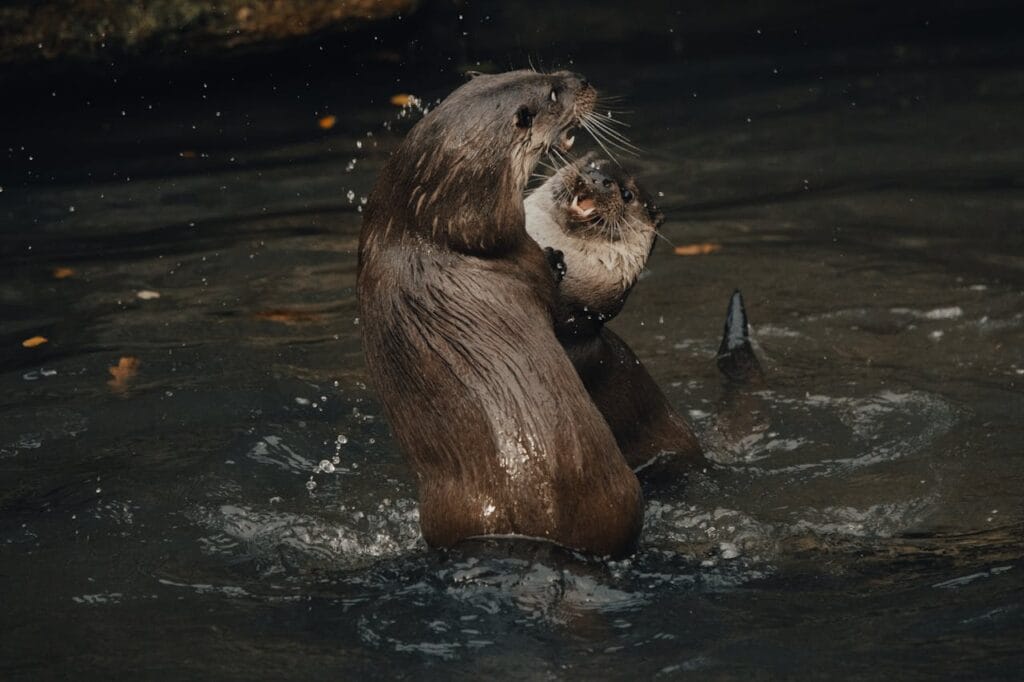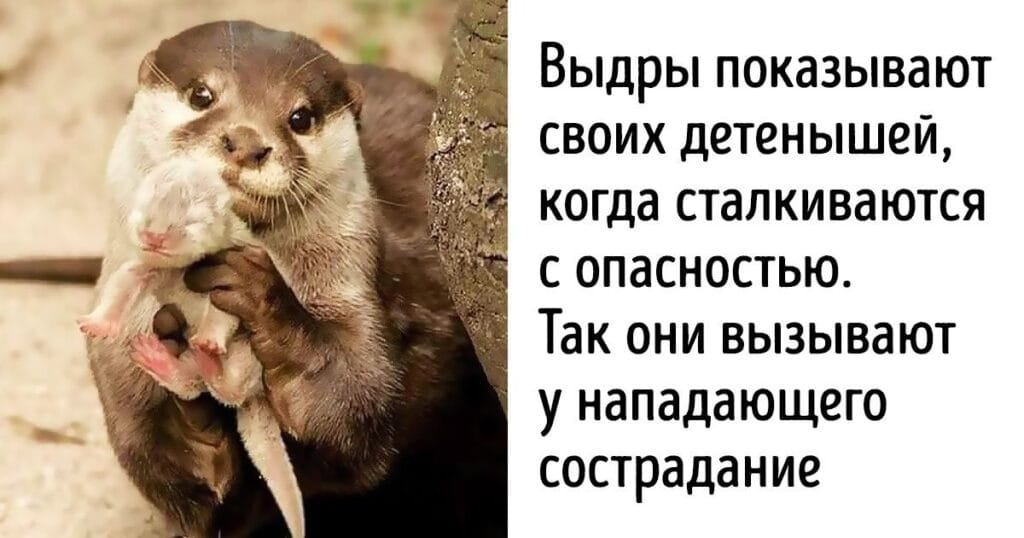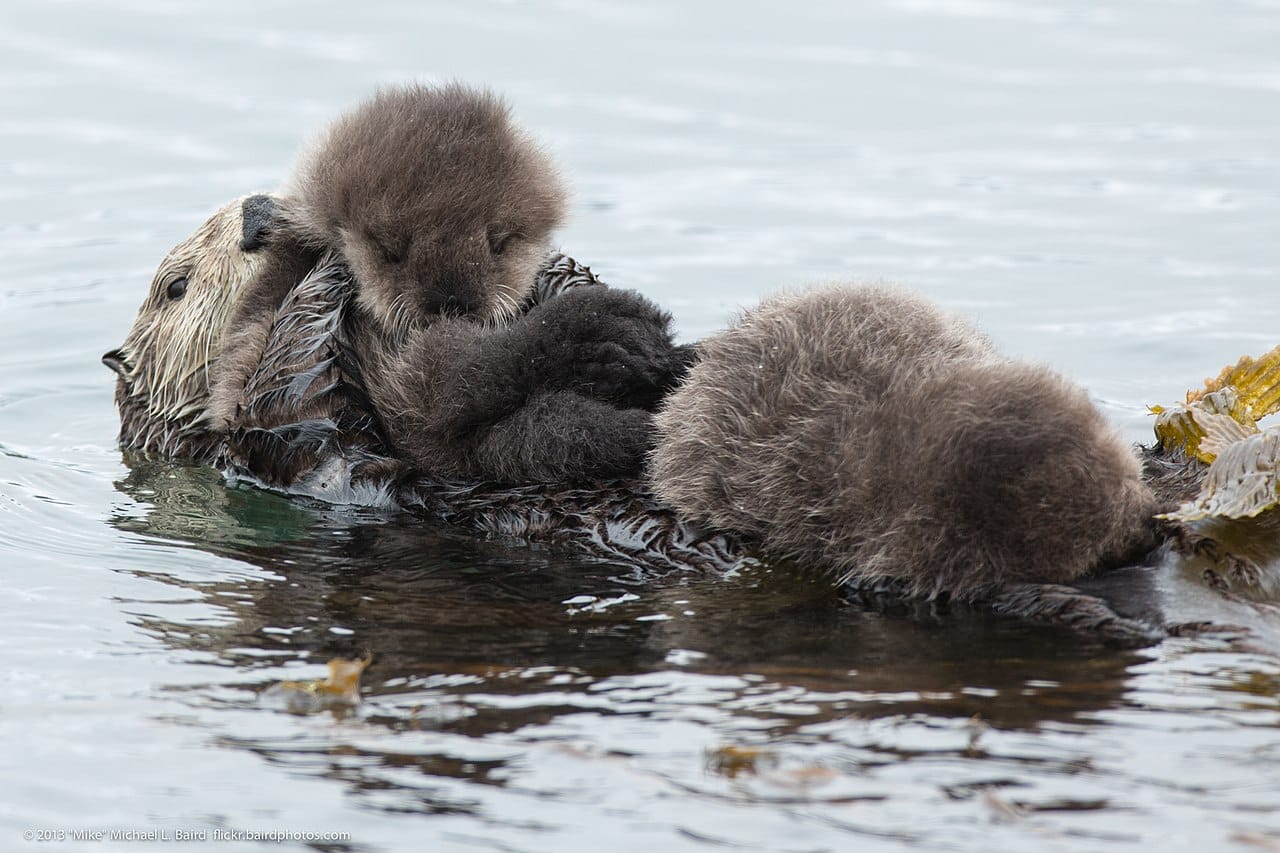There is a widespread claim on the Internet that otters use their cubs during attacks by predators, trying to pity them. We decided to check if this is true.
Very popular on the Internet pictures with a cute otter holding her baby otter in her paws. Signature to them often reads, that with such a gesture the animal evokes compassion from the predator attacking it. This statement can be found in all sorts of collections interesting facts on entertaining websites, information portals and even in some encyclopedias. Social network users also talk about the unusual behavior of otters (“VKontakte", Instagram*, Facebook*, Telegram, X) and blog platforms (LiveJournal, "Zen").
There are 13 species in the world otters, predatory mammals from the mustelidae family. 11 of them prefer fresh water bodies, two prefer sea water, and while river otters make their dens on land, using water bodies mainly for hunting and movement, sea otters live mainly in water. The distribution range of otters is wide - they live in North and South America, Europe, Africa and Asia. These are one of the few animals that use improvised means as tools: They also feed on crabs and mussels, after breaking hard shells or shells with stones. On otters hunt larger predators such as bobcats, alligators, coyotes, etc. Sea otters threaten also sharks, killer whales and eagles, and the latter often prey on young ones.
Freshwater otters give birth usually one to three young at a time, some varieties up to five. Otter cubs are born blind and toothless; they spend the first few weeks in the den where they were born, feeding on their mother's milk and sleeping. Their eyes open at about a month, at two months they already leave the den and begin to swim, and by four months they can get their own food. During the year, freshwater otter cubs usually remain close to their mother. Female sea otters give birth in the water, almost always with only one pup in the litter. If several of them are born, the female often throws the rest, since only one can ensure survival. After giving birth, females almost constantly swim on their backs, holding the otter on their stomachs so that it can feed at any time. At four weeks, sea otter pups begin to swim, but remain dependent on their mothers for six months. Both freshwater and sea otters are very aggressive in protecting their young.
There are research, which testifythat animals (such as rats, monkeys and elephants) can indeed experience compassion and empathy, although not at the same level as humans. However, almost all scientific work has been devoted to studying the emotions of animals in relation to representatives of their own species (however, domestic animals, such as dogs, can show empathy towards people). “Verified” was unable to find a single study that would confirm that a predator is capable of empathizing with the prey or its cub - especially during the hunt.
Rarely, there are cases when predators adopt the cubs of their potential victims. Thus, the media wrote that in one of the national parks of Kenya lioness sheltered a small antelope in a zoo in Thailand tigress fed piglets, and in Ireland cat started taking care of ducklings. However, such behavior is also not associated with sympathy for cubs in general. The fact is that animals do not know what their offspring look like. This recognition occurs early after birth due to high levels of the hormone oxytocin, which in females peaks just before birth and then gradually returns to normal over several hours or days. If, during a period when the level of oxytocin is still high, a cub of another species comes into the female’s field of view, she may mistake it for her own and subsequently treat it in the same way as her own family. However, if someone else’s cub is given to a female whose hormonal levels have managed to normalize, at best she will simply reject it. Most often, adoption cases, which are reported from time to time in the media, occur in captivity, when zoo or nursery staff place cubs with a female of another species. In the wild, such coincidences are also possible, but there they would probably still end in the death of the cub. For example, lionesses, like cats, carry their cubs in their teeth, holding them by the withers. Lion cubs are anatomically prepared for this, but an antelope cub can be seriously harmed in this situation.

The otters themselves are also not seen to have any particularly friendly attitude towards the offspring of other animals to expect the same in return. For example, male California sea otters who are unable to find females to mate with may rape seal pups, which often leads to the death of the latter.
Even within their own species, otters do not treat other people's cubs with great care. Sometimes the males actually take the otters hostage in order to take food from the females. American researchers describe a similar happening: the female dived for food, leaving the cub on the surface of the water, at which time the male crept up to him and began to drown him. This continued until the otter gave the attacker the caught prey. Then he released the otter, and the mother and cub escaped.
Otters have a reputation among internet users as cute, furry animals, but they are actually quite ferocious. predators with sharp teeth and powerful jaws, not at all inclined to give in to danger. Despite the fact that otters are smaller in size than some of their potential pursuers, due to their agility they are quite capable of escaping or fighting off, for example, coyotes. A group of otters is capable of defeating or driving away even such predators as jaguar And crocodile. Serious attacks also occur on people, if they find themselves in close proximity to the cubs.
Despite the fact that a huge number of videos and popular science programs about otters are posted on YouTube, Verified could not find any where an otter would try to escape from a predator by showing it its cub. There is no data on such a survival strategy among otters on any authoritative resources about animals.
A significant part of the posts dedicated to this interesting fact (both in Russian and English) use the same photograph of an otter holding its cub in its paws. However, no danger is visible in the photo in front of her. “Verified” used the reverse image search service TinEye, and it turned out that the photo of an otter with a cub first appeared on the Internet no later than 2008. Not all of the original records are now available for viewing, but judging by the data obtained by TinEye, they were initially in no way connected with the statement being analyzed.

Thus, there is not a single authoritative evidence that otters, when in danger, show their cubs to predators in an attempt to pity the attacker and escape. In the face of a predator, otters either try to fight back (often quite successfully) or run away, and this is confirmed by numerous videos taken while observing these animals in the wild. Otters are extremely aggressive in protecting their offspring and can even attack people if they are close to the cubs. Predators, in general, are not inclined to show any empathy towards their victims and their offspring, and the otters themselves often act quite cruelly towards the cubs - both of other species and their own. Therefore, it is unclear why they would expect any sympathy from other predators and choose such behavior as a survival strategy.
*Russian authorities think Meta Platforms Inc., which owns the social networks Facebook and Instagram, is an extremist organization; its activities in Russia are prohibited.
Cover photo: Mike Baird from Morro Bay,USA CC BY 2.0, via Wikimedia Commons
Read on the topic:
- National Geographic. Otters
- SeaWorld Parks & Entertainment. All about otters
- Moscow Zoo. Otter
- Is it true that crocodiles cry when they eat their victims?
- Is it true that animals do not attack each other at a watering hole?
If you find a spelling or grammatical error, please let us know by highlighting the error text and clicking Ctrl+Enter.






